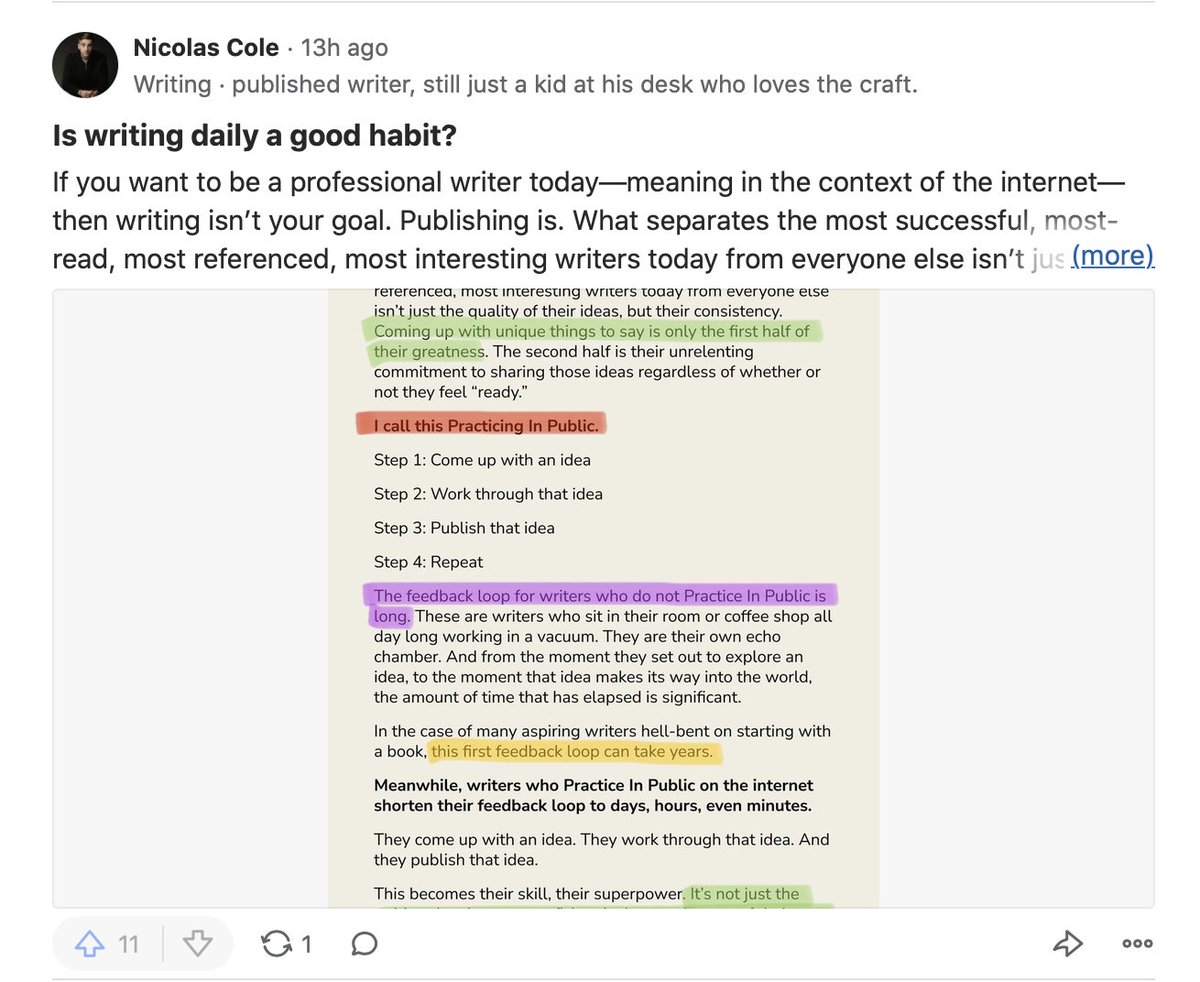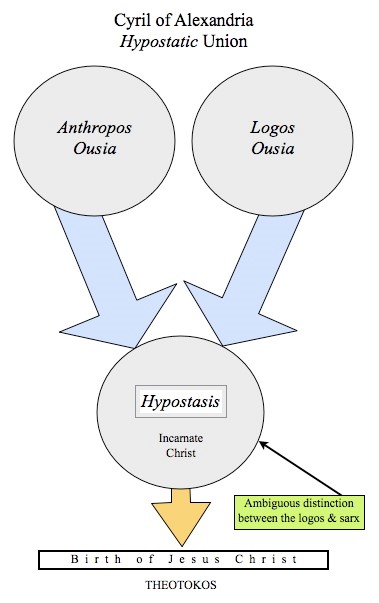2. Why am I compelled to speak? How am I free to speak? The answer is in the federal Values and Ethics Code of Coduct (VECC).
3. It can be career-limiting to criticize government policy when you work for government. Duty of Loyalty is very, very important. However, as VECC makes clear, it is not absolute. In fact SCoC has ruled twice in favour of citizen free speech as a higher ideal. In 1985 and 2001.
4. I am therefore perfectly comfortable showing you the scary things that are happening in the North under a warming climate. A failure to meet global GHG emissions targets is hurting Canada's forests in a way we used to think wouldn't happen for decades.
5. Warming temperatures and rising [CO2] could, in theory, help green the planet with more vigorous tree growth. But that's not what's happening. Don't believe the #greenwash. The positive effects are over and it is warm enough that we are now starting the into the negative.
6. What "greenwash", you ask? Well, here is sample #1. Written during the writ period of 2019.
7. I like
@DougSaunders writing. The problem with this piece
https://t.co/FX4nNA4EoL is that it cited a single remote sensing article from a foreign source. No Canadians consulted. No Americans.
8. Send any satellite up in space to take a picture, and, yes, the image is greener than images taken decades ago. Yes, the earth is greening ON AVERAGE. But inside this mean response is some frightening variation.
9. Yes, as
@nntaleb discussed a month ago, alpine treeline is rising globally as trees move upslope into alpine meadows. We've known this since the 1970s. It's largely a result of fighting forest fires, but also climate warming.
10. Just before I recommence ... let me be clear that I don't see any one individual as being responsible for electoral greenwash. What we have is a system whereby Canadians in an electoral writ were systematically under-informed about climate change impacts.
11. What you will note is that the specific sources of reporting bias are very hard to pin down. Now, back to the hard facts.
12. The following facts were all known to us back in August 2015. We knew the Canadian climate was warming fastest in the Northwest region. We knew high latitudes and high elevations were drying out.
13. Some groups had been publishing old good news as though it was new news. It wasn't. Here is a paper from Spring 2015 that had some issues. Example #2 of an emerging trend that year of positive fake news of the benefits of climate warming.
14. In the 1990s we were thinking a bit of climate warming could be positive for northern and coastal forests. And there were positive impacts though the 1990s and 2000s. But things have changed, and we knew that as early as 2015.
15. We rebutted that paper as fast as we could, but it took the journal months to publish our reply.
16. We found four elements of the paper that were weak, making it effectively old news, but the authors refused to release to us data and code, to improve the analysis.
17. The authors were quoted in the Edmonton Journal saying that their paper proved that forest growth models didn't need to include the negative effects of climate change! - which their own results documented!
18. So the biggest part of the problem was not the paper, but the Abstract, its title, and the ensuing media interactions. Worse still, the lead author was a foreign grad student with no media training, no policy context.
19. One of my co-authors, Werner Kurz - great guy - suggested we simply let our own peer-reviewed publications, in the works, do the refuting. Ok, but that kinda backfired. For one, if you don't counter climate science misinformation immediately, it spreads fast. Also ...
20. When my esteemed colleagues, Pierre-Yves Bernier and Sylvie Gauthier, published their blockbuster in "Science", it happened to fall in the writ period. They could not get govt approval to speak to their own work!
21. I repeat: on Aug 21, 2015 Cdn scientists were not permitted to explain to CBC why, re: boreal forests "projected environmental changes of unprecedented speed and amplitude pose a substantial threat to their health".
22. To our collective frustration, and likely unbeknownst to Mr. Saunders, his piece on the fresh green news that forests were expanding around the planet, came exactly one week later. It was directly contrary to the emerging news that mattered to the long-term prognosis.
23. Make no mistake. The planet is indeed greening, on average, and that's the picture you get from 1980s era satellite imagery. But modern LIDAR and ground observations tell a different story.
24. This cartoon summarizes what's really going on.
25. As treeline rises the older, taller trees are challenged to stay moist during the warmer, drier conditions. What's greening are the abandoned farm fields where weedy primary forest species are invading. This is a global fact.
26. Look up papers by Martin Girardin and by Robert Hember. Tall trees can't handle the moisture stress. Their growth rates are declining as they die from the top down. The biggest oldest trees are the most susceptible. As they die, weedy little aspens fill those gaps.
27. We knew this in 2012. We were very excited when NASA's Eric Kaschiche came to Edmonton to outline the "Arctic Boreal Vulnerability Experiment". What a kind genius.
https://t.co/tOrQy2ARas
28. But we couldn't garner support for comparable study on the Cdn side. Funding is so limited, you see, and the far northern and alpine forests don't have the same commercial value as southern and boreal forests. Understandable. But kind of a shame too.
29. What we were seeing in 2012 has only gotten worse by 2018. Each year our "cherry-picked" photos become more and more representative of the large-scale regional trend. When you come north you can park the greenwash. I have a brown surprise for you.
30. This is an honest-to-goodness trigger warning. If you like trees, the following images could make you sad.
31. The northern black spruce forests are vast and undeveloped. But these stupendous vistas are now revealing large swaths of dead trees where water tables are rising from melting permafrost.
32. It's the flatter, wetter areas that are most prone to flooding, and the mortality is staggering.
33. Hardwoods are dying too. From flooding. From permafrost melt. From soil slumping.
34. When permafrost melts, soil destabilizes and tall trees fall over. So-called "drunken forests".
35. The stresses on foliage of all species is remarkable. We've never seen so much of it occurring all at once. Never.
36. Northern forest insects of many species are exhibiting unusually well-synchronized outbreaks of impressive extent.
37. The Rocky Mountain forests, too, are under severe moisture stress. Every species is exhibiting dieback symptoms.
38. Ribbons of mortality of spruce, and aspen are visible from the air, though not always by satellite.
39. On the ground, what you see in alpine regions is a browning that does not appear in decadal studies of satellite imagery. Satellite imagery is imprecise. Ever heard of the phrase "ground-truthing"?
40. The moisture stresses in the Rockies are rising. There is a trend, but there are also drought cycles, and these drying events are increasing in frequency, and tree growth rates of conifers and hardwoods are dropping in lockstep.
41. Jasper National Park has lost the battle of the pine beetle. We saw it coming in 2008. We knew it was hopeless even before it started in 2012.
42. But don't forget the root diseases triggered by sudden severe warming. The scale of balsam fir mortality is frightening.
43. As bad as the situation is today, it's really only started. Big change is coming.
44. These isolated snapshots I've shared show early signs of what's to come. It's when you map out the photos that you appreciate the extent of these emerging changes. This poster by Roger Brett and Jakub Olesinski, for example.
45. These incredible photos were taken by CFS's Roger Brett, out of Edmonton. No one has seen as much of the North as Roger has. When he shared them with me, starting in 2012, he blew me away. Six years later, conditions in the North have steadily worsened.
46. Now some closing thoughts on "electoral greenwash" - because remember: I was not free to share these images back in the summer and fall of 2015 - when pine beetles were running roughshod over Jasper NP.
47. Greenwash is more than just a focused and well-funded misinformation campaign by climate-denying foreign oil shills. It's also a generalized and unfocused and unorganized attempt to produce soothing stories that take the edge of the climate alarm bells.
48. With the latter, there is no "political corruption". There is just an honest demand for, and supply of, narratives that relieve public climate anxiety. And if it is occurring in a writ period, and in the context of public servant free speech, I consider it is "electoral".
49. Think back to Sep 2015. Remember "Harperman"? Remember the PIPSC political campaign? Remember "muzzling of scientists" as a CBC meme? While all that was going on, here were our northern forests crumbling under climate change, with no Cdn gov scientists feeling free to speak.
50. But it was easy to spot the greenwash. Lots of good news stories. "It's not that bad". "Forest carbon sinks can save us". Well, it is that bad and no, they can't.
51. The science was just clear enough in 2008 that Stephen Harper made the right call: Canada's managed forests risked being a source, not a sink, of carbon, and Canadians should not gamble on forests as a climate solution.
52. As early as 2002 a bunch of us entomologists were concerned that insect pests (such as spruce budworm) under climate change would tip that balance. By 2008 - thank to Werner Kurz - it was clear that it was happening, and it was pine beetle in BC that was tipping the balance.
53. In 2011 the Hon. David Emerson, advisor to the PM, suggested to PMSH that the public service be viewed as "a stable instrument for the strategic analysis of long-term questions of national importance". I could not agree more.
54. The whole of Turtle Island is undergoing transformative change under climate change.
55. The changes I've shown you today are from the North. But I work out of Robinson Treaty, at heart of the Turtle. Around here, it's not the direct effects of climate warming that are threatening forests. It's exotic invasives that come in through unrestricted foreign trade.
56. Some, like Peter
Shawn Taylor, at Maclean's, have suggested we should "welcome our foreign invaders" as a matter of formal policy. The Ontario government did not agree when I worked there in 2017, and I suspect they still do not.
57. "Welcome to Canada, exotic emerald ash borer. Eat all the indigenous ash you like. Stay forever. Again, welcome."
58. "Welcome to Canada, exotic hemlock woolly adelgid. Eat all the indigenous hemlock you like. Stay forever. Again, welcome."
59. "Welcome to Canada, exotic european elm bark beetle, and welcome to your fungal associates that cause Dutch elm disease. Eat all the indigenous elm you like. Stay forever. Again, welcome."
60. "Welcome to Canada, exotic brown spruce longhorn beetle. They say you only eat majestic old trees on their way out, but you are welcome to try all the indigenous spruce you like, including the black spruce that is a Canadian newsprint staple. Stay forever. Again, welcome."
61. "Welcome to T'karonto, exotic asian longhorn beetle. Eat all the sugar maple you like. It's only the symbol on the national flag and the source of maple syrup. Stay forever. Again, welcome."
62. "Welcome, chestnut blight, beech bark disease, sudden oak death, white pine blister rust, and oak wilt. Consume what's left of the Great Lakes forest, and enjoy your new home on Turtle Island. Welcome, invader."
63. Is this hyperbole "unprofessional"? Or does it effectively highlight the economic folly of a one-sided counter-factual "welcome, invaders" policy?
64. Ontario's policy on forest invasive alien species is to perform an evidence based analysis of risk, to rank the pests by priority, and to plan policy around these priorities.
65. Much of the operational programming on invasive species is carried out by the aptly named
@InvSp located 50m from my sunny little coffee nook.
66. I myself do not research on invasive species, but my amazing colleagues at
@GLFC_CFS do. Why do we do it? Why not just "welcome the invaders", and be done with it?
67. That is a fair question. Because it's not immediately obvious that the return on investment is all that high with these systems. Is it? Well, for starters, that is an economics research question. And we have really smart people to help answer these queations.
68. When you read papers by Dan McKenney, Denys Yemshanov, John Pedlar you will find sober realism re: what is achievable in managing invasive species. There are no magic bullets. Adaptation costs are high. Operational program planners must be ruthlessly judicious.
69. Even when it comes to entomological research - basic biology, sampling, and biological control. The focus is on what is important and what is realistically achievable.
70. Did you know that Krista Ryall and
@CMacQuar save Canadian munipalities millions of dollars a year by developing emerald ash borer sampling protocols that are cost effective, and are a critical part of avoiding bad program/policy design?
71. They are too modest to self-promote. But from Winnipeg to Thunder Bay to Quebec City to Halifax, they have saved countless municipal forest managers millions of dollars and political embarrasment by showing them how to do a proper EAB risk evaluation.
72. Why do we not just roll out the welcome mat to invaders? Basically because Canadian provinces and municipalities have told us again and again, they just don't want that. They want us to do the best we can mitigating damage while keeping costs low & adapting where necessary.
73. A sub-theme: not once have I criticized current government policy. The government is doing everything it feels it's politically able to do given the political landscape. I do not envy their jobs, being asked to strike a balance between starkly opposing forces.
74. Satellite sensors such as LANDSAT yield only *crude* pictures of forest conditions. Honest remote sensing scientists will tell you this straight up. People I trust include
@mikewulder and his team,
@MGeosci and Phil Townsend, Ron Hall, and Guillermo Castilla.
75. I am keen on drones and new hyperspectral sensors that can help fill in the data gaps to provide a complete picture of forest conditions, but they are crude enough that they need to be continually calibrated against ground observations by real foresters. Good RSers know this!
76. So next time you science journalists want to talk about greening planet, contact people in this thread. Try to get both sides of any storyline. Talk to NASA. They put dudes on the moon. They know what dead trees look like.
77. Misquoting a NASA-authored paper is not "talking to NASA". It's misappropriation. If you're an aged person of means and power, you don't get to play climate troll.
78. The precise reason why CFS science in 2015 was *new* news is because of the new browning. The greening of the 1970s-90s was the new news back in the early 2000s. Today, it's *old* news.
79. Professor Myneni, who led that 2016 NCC paper out of Boston U is credible - a far more accomplished scientist than myself. However he is also part of the IPCC consensus. 😊 But no appeal to authority changes the data. The greening is slowing. The browning is accelerating.
80. Old news: these data stop in 2009.
81. Like I say above, our first signs of decline started emerging in the summer of 2009. By 2013 they were frightening. By 2015 I was alarmed. Now, in 2018, I am gripped with anxiety.
PLEASE READ THE SOURCE PAPERS YOU CITE, AND ASK THE ADVICE OF A FRIENDLY PROFESSIONAL.
82. Here is what CFS was saying in 2013: "decline", "tree-killing drought", "great uncertainty".
83. 2018 paper. Kevin Timoney, Peter Lee and Ross Wein claim a 26% reduction in live treed area across tundra 1955-2006:
84. Why won't people cite Canadian researchers knowledgeable about Canadian landscape, who care deeply about Canadian policy context, including what this could mean for FNs? What's wrong with indigenous research, produced locally, for local consumption? Is it inconvenient?





























































